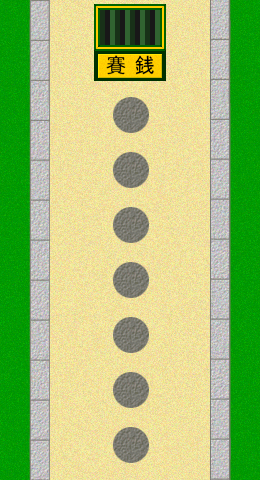| 祠 • hokora | ||||||
絵馬殿 • ema-den
Small tablets bearing illustrations or text, offered to kami as emblems of wishes, or vows, or expressions of thanks. |
 |
祠社務所 • hokora-shamusho
Administration offices for the hokora, and contact for: questions, help, ema, ofuda, or omamori. |
||||
神楽殿 • kagura-den
Where sacred dance (kagura) and music (gagaku), or noh plays are offered to kami during ceremonies. kagura is also performed by miko in the open area in front of a shrine, or on a stage. |
御守り • omamori
An amulet made of cloth or paper, enclosing papers or pieces of wood with prayers written on them. The prayers are to bring good luck to the bearer on particular occasions, tasks or ordeals, or to ward off bad luck. |
|||||
御先祖の祠 • gosenzo-no-hokora
Paganistan's Ancestor Shrine |
御神籤 • omikuji
Literally "sacred lottery", these are usually wooden strips choosen from a box. The strips have a number that corresponds to a fortune written on a strip of paper. The fortune predicts a person's chances of their wish coming true, of finding a good match, or are generally about matters of health, fortune, and life. When a prediction is bad, it is customary to fold up the strip of paper and attach it to a branch of a tree or a wall of metal wires on the hokora grounds. |
|||||
手水舎 • temizuya
An area where clear water fills one or more stone basins; used by worshipers for washing their hands and mouths to purify themselves before approaching the hokora. |
||||||
| 鳥居 • torii | ||||||